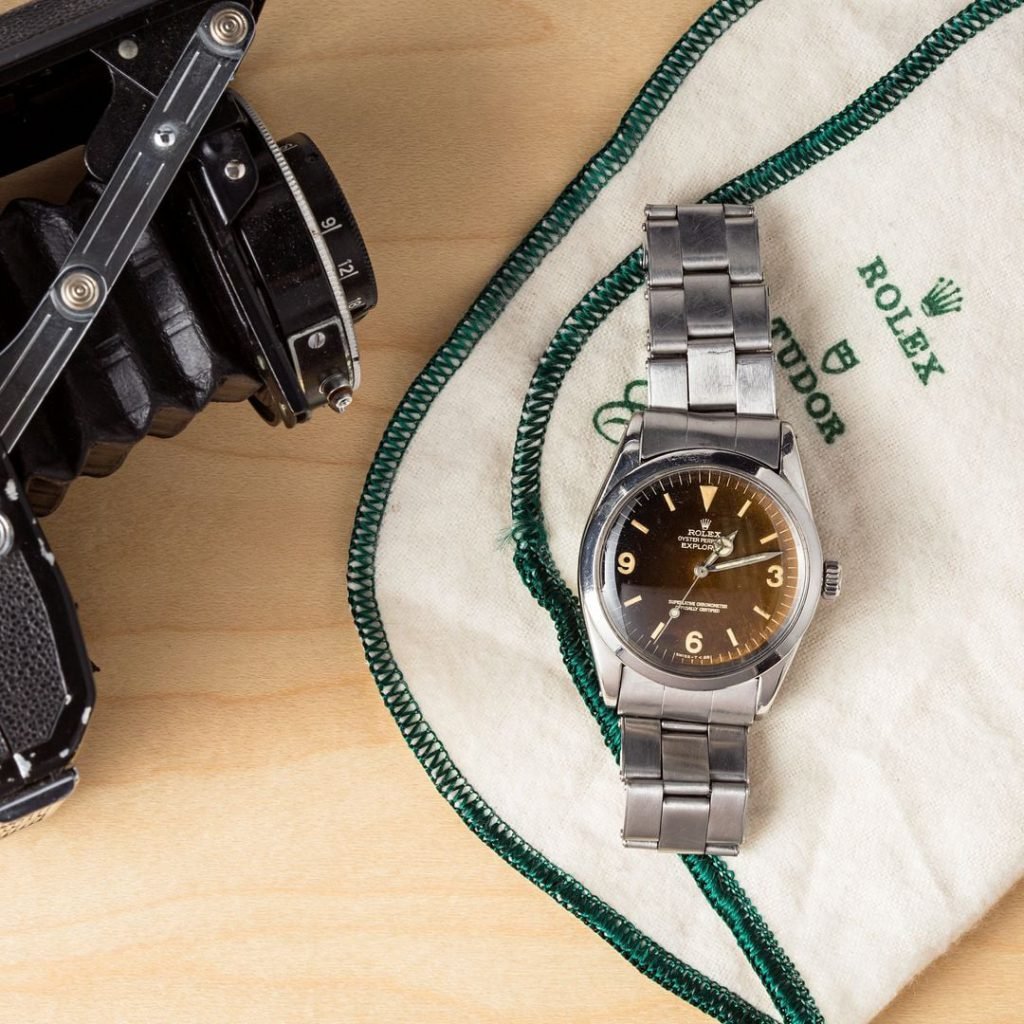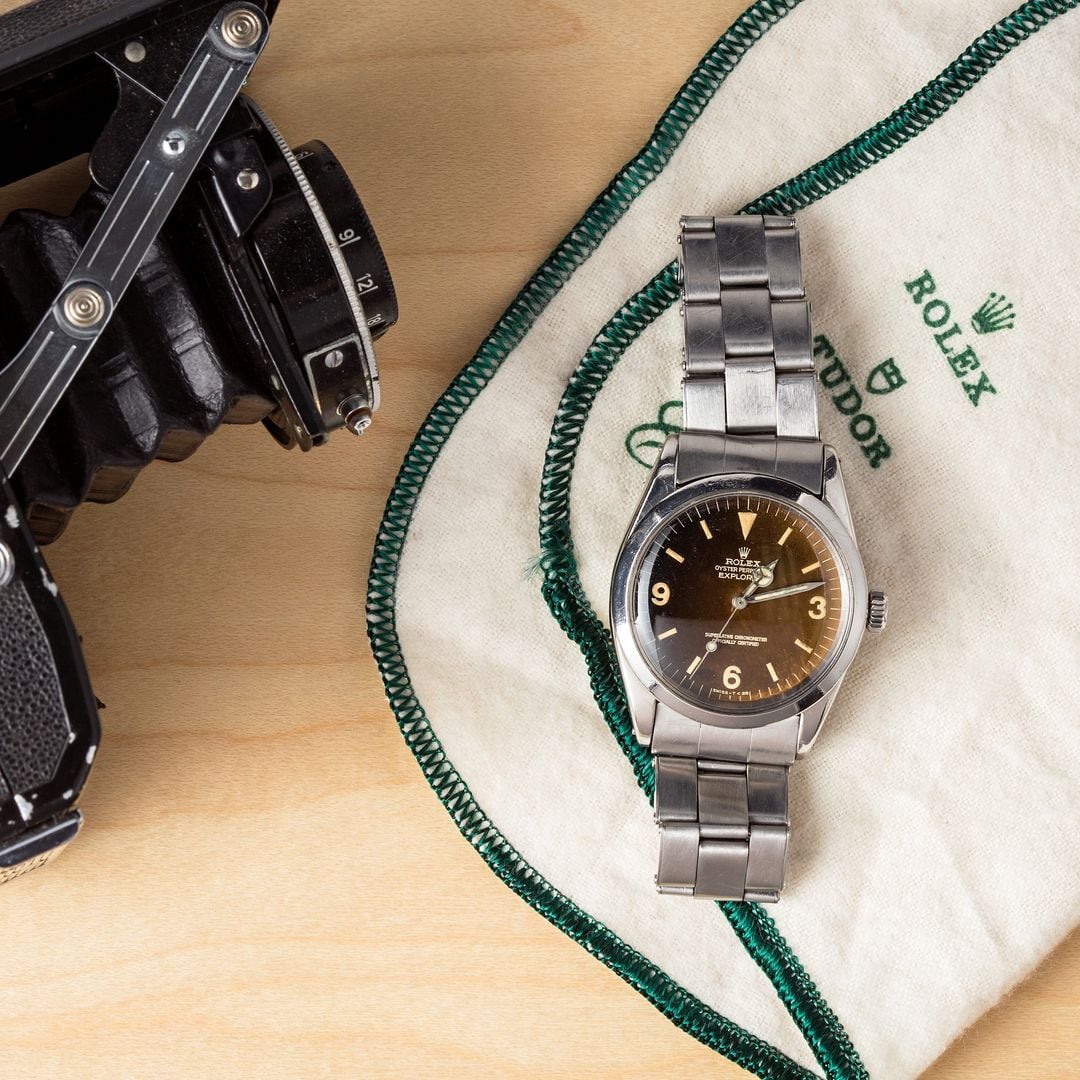Simple time-only functionality housed in a robust stainless steel case, the vintage Rolex 1016 Explorer is a favorite reference among vintage Rolex watch collectors. Quietly assertive without any of the flashy in-your-face approach of some other Rolex sports watches, the Explorer 1016 may have been positioned as a watch to scale mountains, but it’s a great everyday Rolex watch to wear today.
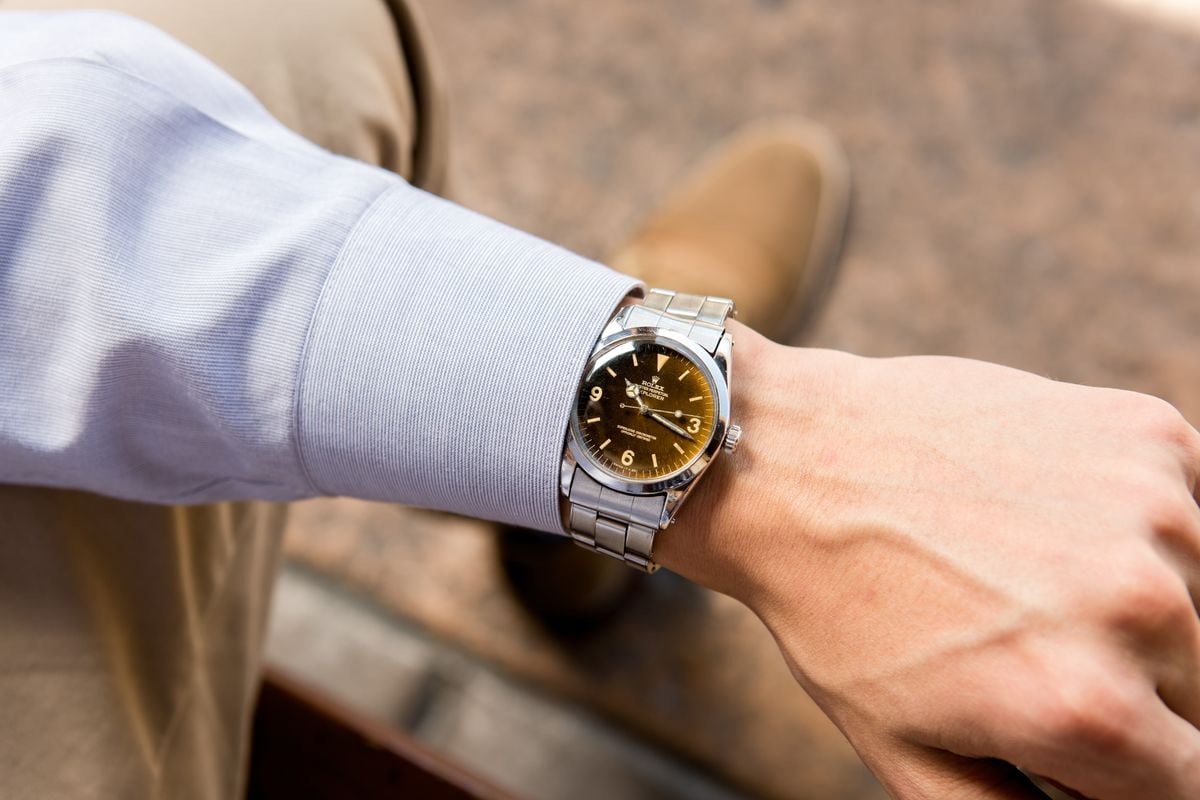
Key Features
– Introduced in late 1950s
– Black glossy or matte dial
– Stainless steel case
– Caliber 1560 or caliber 1570 movement
Table of Contents:
The History Of The Explorer 1016
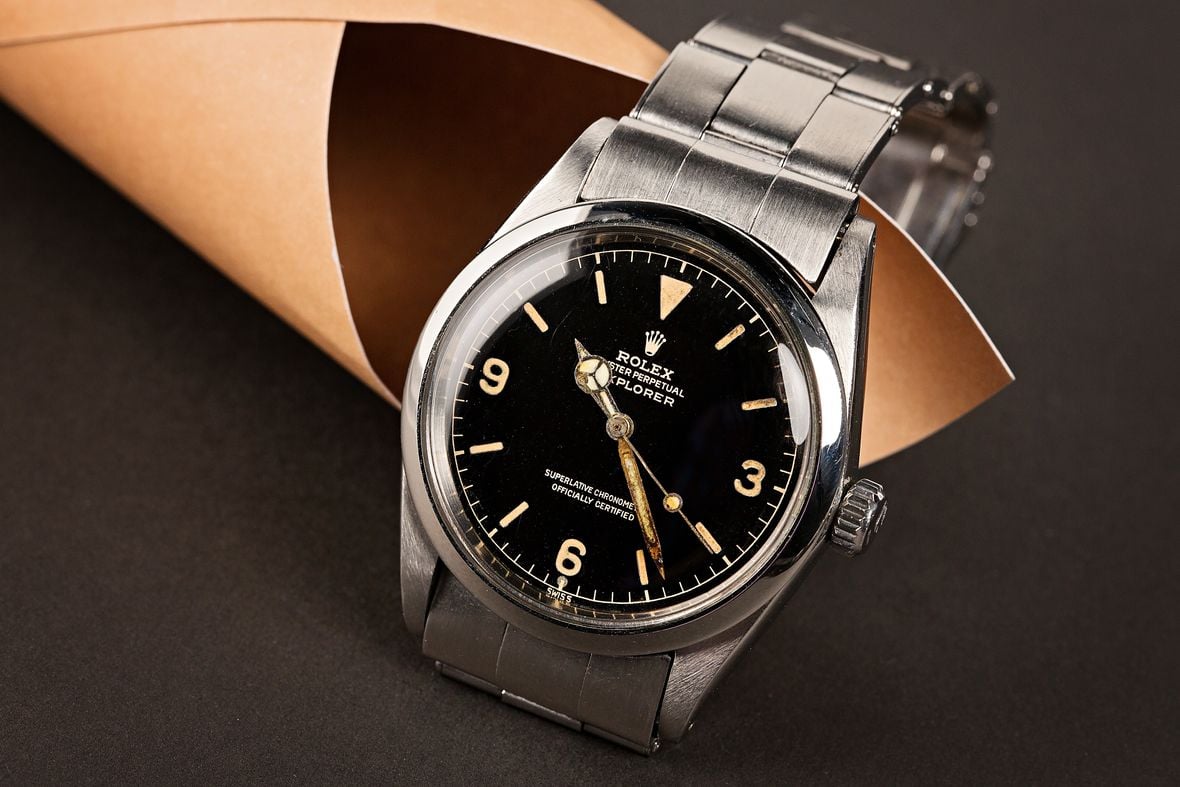
As the story goes, Tenzing Norgay and Sir Edmund Hillary went down in history as the first people to successfully reach Mount Everest’s peak. Along for the ride was the Rolex Oyster – aka the “Pre-Explorer” – which was a prototype of what would eventually become the Explorer mountaineer’s watch. It featured a Bubbleback case to accommodate the thick movement inside and was not equipped with the famous 3/6/9 dial configuration.
The climbers’ historic feat proved on the world stage that Rolex Oyster cases are tough and can withstand some of the most extreme environments on Earth. To celebrate, Rolex released the Explorer later that year in 1953 with an improved crown and the same domed case back. A handful of these “Bubbleback” references preceded ref. 1016, including 6098, 6298, 6150, and 6350.
Rolex released ref. 6610 in the late 1950s, introducing the Explorer collection to the new cal. 1030 movement. It was much slimmer than previous Explorer movements, allowing the case to take on a flatter case back. It marked the end of the Bubbleback era Explorers. It didn’t remain in production for long, though, as Rolex quickly improved upon its watchmaking technologies.
Rolex introduced the Explorer 1016 just a few years later, replacing reference 6610 and bringing with it an improved movement from the 15XX generation. As the company was already a decade into making the Explorer collection, the ref. 1016 boasts most of the design traits that will forever be associated with the model. Rolex continued to manufacture the Explorer 1016 until about 1989, when it was replaced by the Explorer ref. 14270.
The Design Evolution Of The Explorer 1016
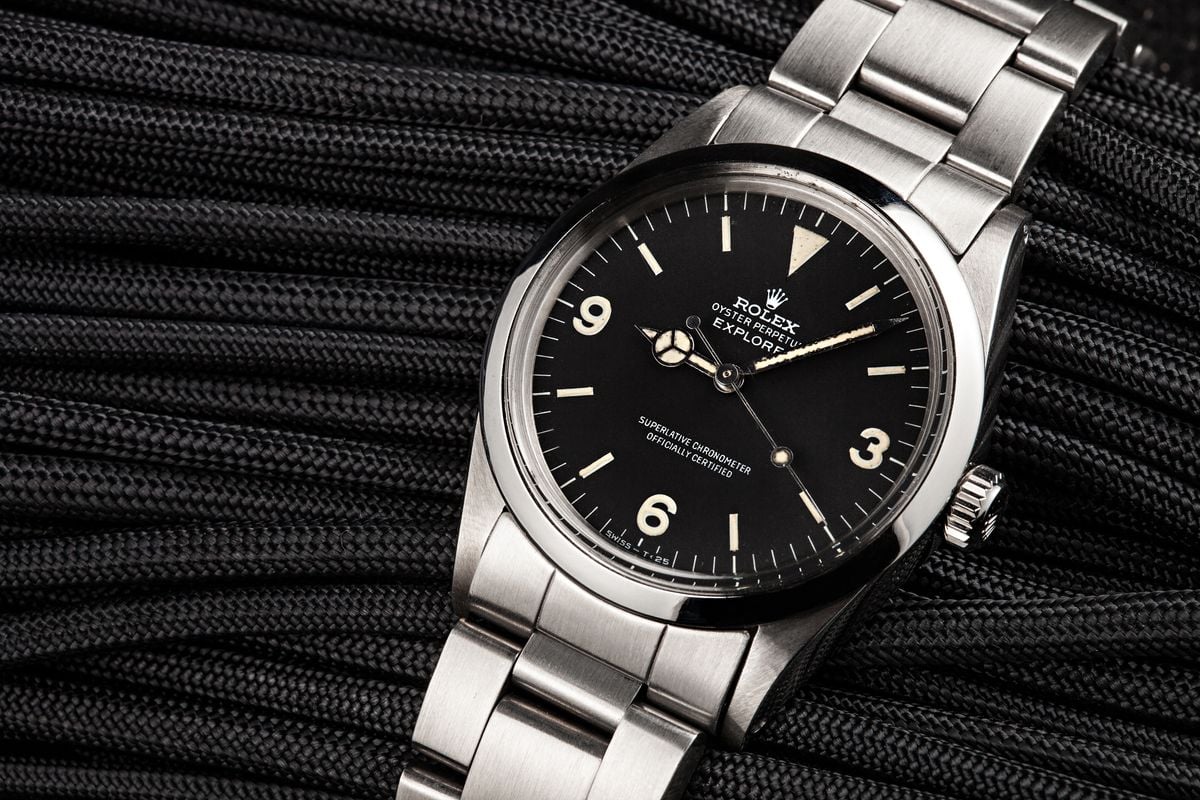
It isn’t unusual for a vintage watch produced for as long as the Explorer 1016 was to have many variations to its name. At the same time, the beloved vintage Rolex manages to hold tight to the Explorer blueprint that makes the collection so legendary. Let’s take a closer look at the features of reference 1016 and its many variations.
THE CASE
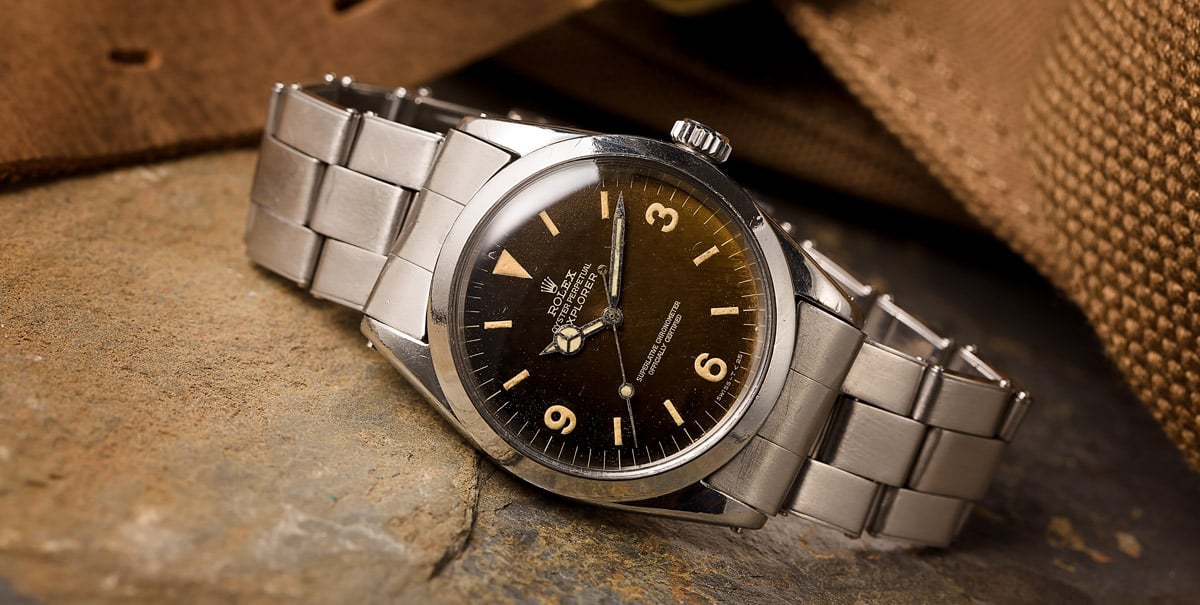
When the Explorer 1016 made its debut, it retained the steel construction and a similar dial design of previous models. It utilized the same stainless steel case as the Datejust ref. 1603, measuring 36mm. Of course, it was also afforded a few upgrades to make it more suited for mountaineering, such as a thicker acrylic crystal and a special lubricant to protect the watch at lower temperatures. It also featured increased water resistance of up to 100 meters/330 feet, double that of its predecessor ref. 6610.
Reference 1016 lacks crown guards and is flanked by slender lugs. The crown is adorned with the iconic Rolex coronet with an underline, signifying that it utilizes the Twinlock waterproof system with two rubber gaskets. Protecting the face of the Explorer 1016 is the vintage-style domed acrylic crystal. However, it’s not uncommon to find pieces in today’s market that have replacement service acrylic crystals, which are flattened rather than domed.
THE DIAL
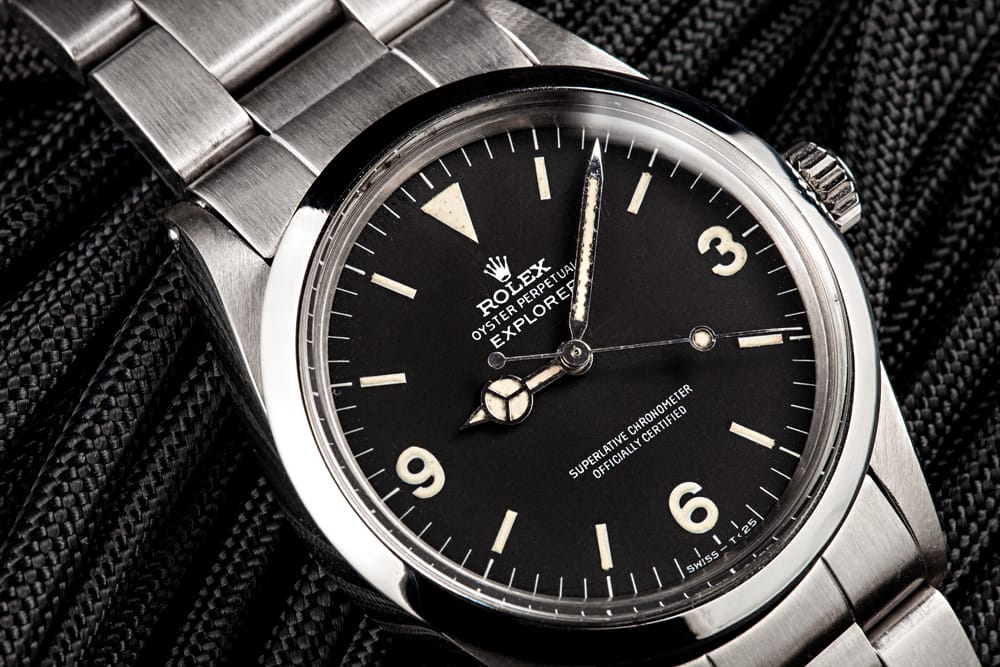
For the most part, the Explorer 1016 has preserved the iconic dial layout with the oversized 3/6/9 Arabic numerals positioned alongside the stick hour makers and inverted triangle at 12 o’clock. The dial is what differentiates the Explorer from other Rolex watches. Even today’s Explorer watches have essentially the same dial design. Since this particular watch was sold as a companion to take with you on treacherous expeditions, Rolex had to ensure that the dial was highly legible—hence the oversized numerals and broad Mercedes-style hands.
As with all Rolex watches made in the same era, the Explorer 1016 first used Radium, followed by Tritium for luminescence. You can tell the difference between each of these dials because the Radium dials are inscribed with the text “SWISS” on the bottom, while those decorated with Tritium boast the distinction “T-SWISS-T” or “SWISS T<25.” Additionally, there are also two different types of hands used throughout the production of ref. 1016, either flat or curved.
GLOSSY & MATTE DIALS
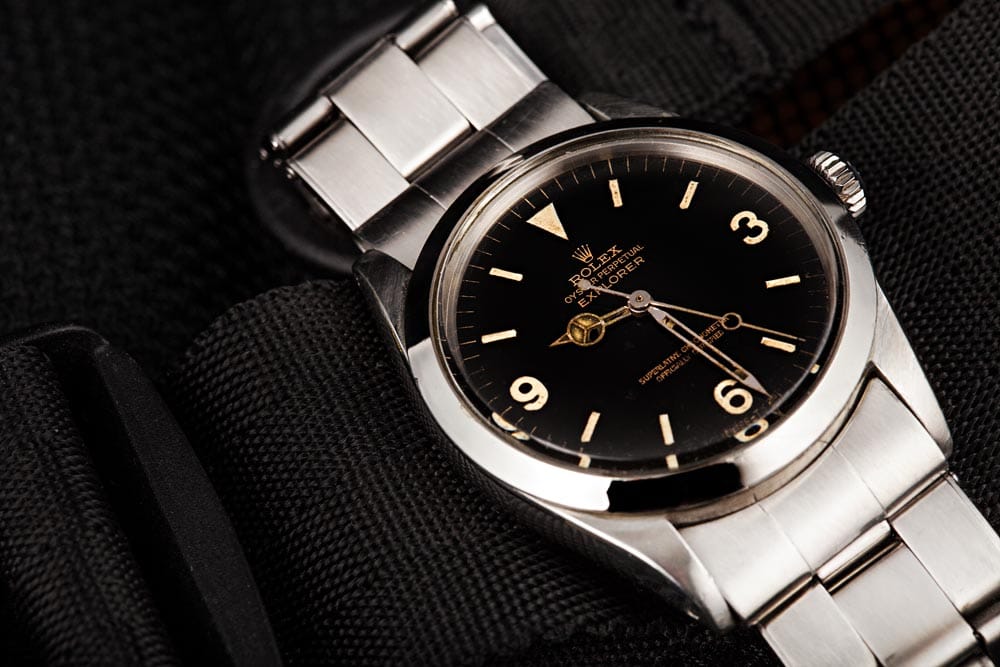
With decades of production to its name, it comes as no surprise that Explorer 1016 was outfitted with numerous dial variations. Early references featured glossy black dials with gilt text. From there, it gets a little confusing as the glossy dials were produced with or without chapter rings – there are four variations of glossy dials with a chapter ring and three variations of those without the chapter ring.
The glossy Explorer dials were replaced by matte dials in the late 1960s, featuring white printed font instead of the gilt font in relief. Each variant is distinguished as Mark 1 – Mark 5 and differs in countless ways, from the shape of the hands to the type of font used. The two dials boast very different aesthetics that will appeal to collectors for a host of different reasons. Either way, many vintage watch enthusiasts can agree that it can be pretty thrilling to finally find the exact dial variant that you’ve always been hunting for.
THE BRACELET
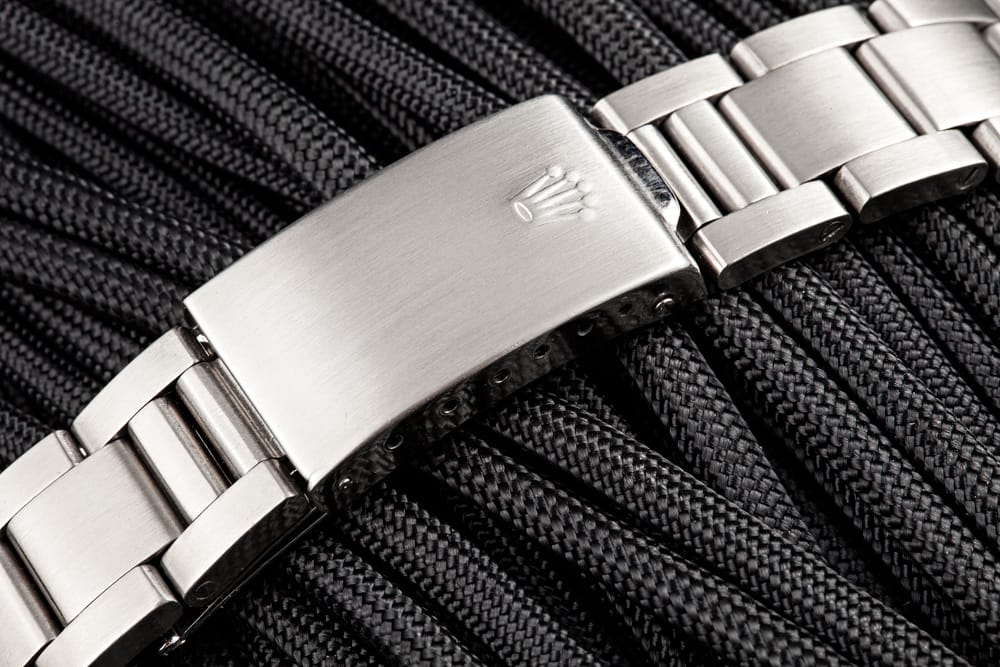
The Explorer 1016 was produced on the 3-link Oyster bracelet. However, some examples were also sold on the Jubilee bracelet. In our research, we are unsure if the Jubilee bracelets were added on by an authorized dealer at the customer’s request or if they came from the Rolex factory that way. Reference 1016 was furnished with a rivet-link Oyster bracelet first, followed by folded-link and then solid link Oyster bracelets. If you prefer the somewhat dressier look of the 5-piece link Jubilee bracelet, reference 1016 can also be found on the secondary market in a handful of variations, including either with 50 end links or 550 end links.
THE MOVEMENT
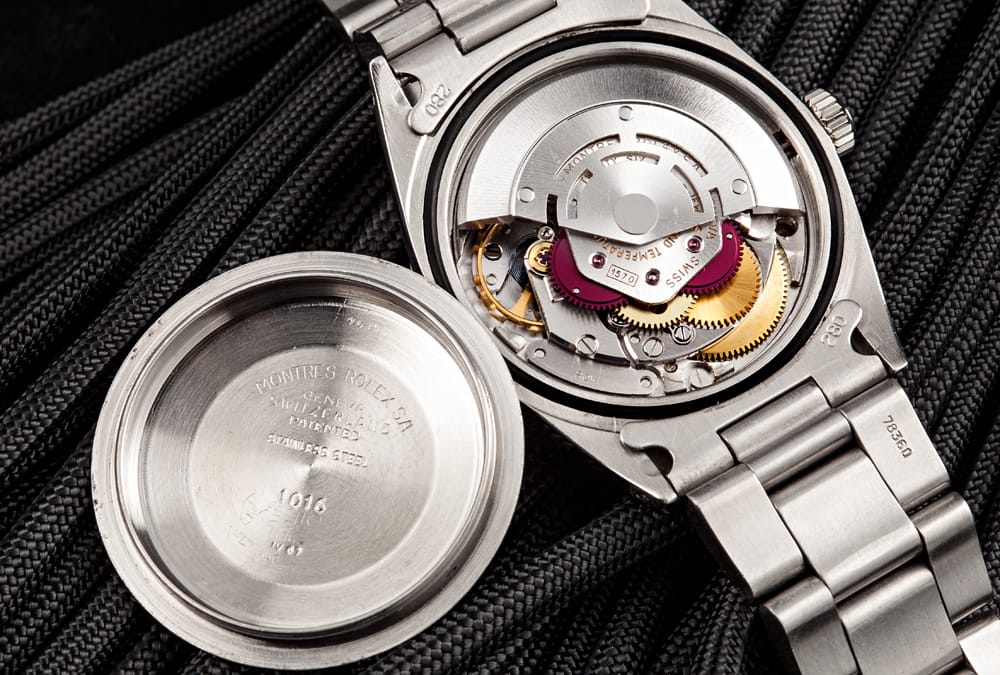
Another change that happened with the Explorer 1016 during its production run was the switch from caliber 1560 to caliber 1570 in the mid-1970s. With the new movement came the hacking seconds feature, which stops the seconds hand when the crown is pulled out. This feature is quite useful if you’re synchronizing your Rolex with another watch.
Both movements are similar in design and are chronometer-rated. They’re also both manufactured entirely in-house. However, cal. 1570 beats at a rate of 19,800 bph, while its predecessor has a lower frequency of 18,000 bph. Cal. 1570 also offers a longer power reserve of up to 48 hours, with cal. 1560 providing a power reserve of up to 42 hours.
The Current Value Of The Explorer 1016

Since the Rolex Explorer 1016 is a favorite among collectors, it has the price tag to match. The value of the Explorer 1016 has steadily increased over the last few years, with interest in this important Rolex reference growing, not to mention inflation seen over the past year around the world. Although an understated watch, the vintage Rolex Explorer 1016 even has a fan base among celebrities like Aziz Ansari, Orlando Bloom, and John Mayer. Moreover, despite its long manufacturing run, a good example of the Explorer 1016 is not an easy vintage Rolex watch to find.
Depending on the production period and current condition, vintage Explorer 1016 prices typically range from about $12,000 to just under $45,000.
Let’s not forget that smaller vintage-inspired men’s watches are a huge trend in modern luxury watches right now. That will undeniably boost interest in the original vintage watches that serve as the source of inspiration – including the Rolex Explorer 1016. So, if you’re lucky enough to find a great example of a vintage Explorer 1016, don’t wait too long to make it yours because there will be a long line of people behind you wanting the same one!
